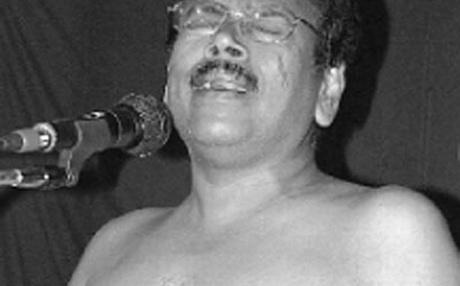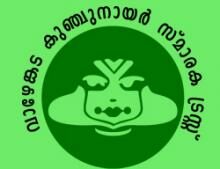An Outlandish Ustad Amidst Pandits
Sreevalsan Thiyyadi
January 4, 2013

In an art form that has basically banked on Hindu mythology for themes and aristocratic Brahmins for patronage, the rise of a Muslim musician in the second half of the 20th century naturally evoked curiosity within Kathakali circles — even among those outside the circuit. Kalamandalam Hyderali’s native Kerala had, doubtless, nurtured a peaceful coexistence of people of the majority community and those from Semitic religions. Yet when it came to indigenous classical performing arts, the otherwise blurred social boundaries would themselves dictate a clear cultural divide. So a non-Hindu performer didn’t exist even in the realm of imagination in, say, the ballet that is Kathakali or the ancient Sanskrit theatre that is Koodiyattam or the resurgent dance that is Mohiniyattam.
It was in the early 1960s that a lean, dusky and poor-looking boy with squinty eyes appeared in a corner of the stage to lend vocal prop to the gorgeous larger-than-life Kathakali characters. Hyderali’s breezy rendition, as always, had an alien charm that almost juxtaposed the weighty style of his chief guru, Kalamandalam Neelakantan Nambisan (1919-85). If the mentor’s treatment of lyrics would sound like the Sampradaya Bhajana that resonated across the Cauvery belt, the pupil’s would sometimes remind you of a qawali or a ghazal heartily sung by an ustad upcountry. For the dense gamaka -strung ornamentation of Nambisan, you had this shishya who tended to stray into the slippery taan territory of Hindustani vocalists.
Hyderali (1946-2006) never owned a high-volume sound — something which was till his early years essential for a Kathakali musician who had to strain to be heard amid the loud percussion beats. But then, his entry into in the field synchronised with the popularisation of the microphone. Soon, soft voices and finer modulations found added effect and extra value than ever before. Romantic characters in the story-plays began to enjoy the ideal audio support.
And, Hyderali’s surely wasn’t a lonely track in this movement. In fact, his talented contemporaries like Sankaran Embranthiri (1944-2007) and Venmani Haridas (1946-2005) arguably outshone him during most of his career. Even so, he stood out by attuning aficionados to a voice culture that was essentially outlandish. His fascination for light music and film songs added to this feature. It isn’t just the movie scores of K J Yesudas that Hyderali admired and hummed off the stage; the Kathakali musician clearly empathised with an ‘outsider’ tag that would occasionally haunt even the former as a Carnatic exponent — despite the celebrity status.
In short, Hyderali contributed to Kathakali music as much as he imbibed from it during his more than four-decades eventful career. His influential brush with Kathakali gave the dance-drama one of its rare chances to assimilate unfamiliar sensibilities — in this case, a unique kind of musicality. Critically, it coincided with a phase in the 1970s during which the art-form’s music wing was taking fancy flights.
In his callow days, though, Hyderali overdid experimentations — something which he conceded with some guilt around the time he turned 50. Ragas of key padams (songs) were often changed; their delineation stemmed from a decision to defy the traditional approach more than to genuinely improve upon them. Infusing Hindustani ragas into Kathakali lyrics well became a fashion; the discomfited aesthete began getting dubbed outdated. What’s more, Hyderali’s innovations mostly came as sudden impulses on the stage; thus bore a chance to falter or flop — either way managing to distract the viewer for whom Kathakali is, after all, a visual art. Subsequently, however, he did become a reliable anchor for not just the dramatic story-plays, but the dense-choreography ones too.
Equally on the positive side, Hyderali was a team man. For all his unpredictable tracks, he seldom snubbed the co-singer. Not just that, when he sang second to masters, he had no qualms in revealing his admiration for them. In fact, Hyderali was one of those rare practitioners who would acknowledge (with a nod or smile) a brilliant flash of artistry from a percussionist or dancer. On some occasions, he would even cryptically salute the revelry of the in-form musician who preceded him, by telling a rasika on his way to the stage that there was no point in his singing that night.
Today, seven years after his death in an accident he met on the road while driving his car to his alma mater, it is clear that Hyderali has no successors. There are one or two singers who sought to follow his style, but seem to have given up now. For, Hyderali’s wasn’t typically south Indian singing. And, in any case, Kathakali is yet to find a noted musician from beyond its native state or outside a religion that has been central to its four centuries of existence.
(Updated reproduction of an article by the author that appeared in a newspaper on January 5, 2010)
